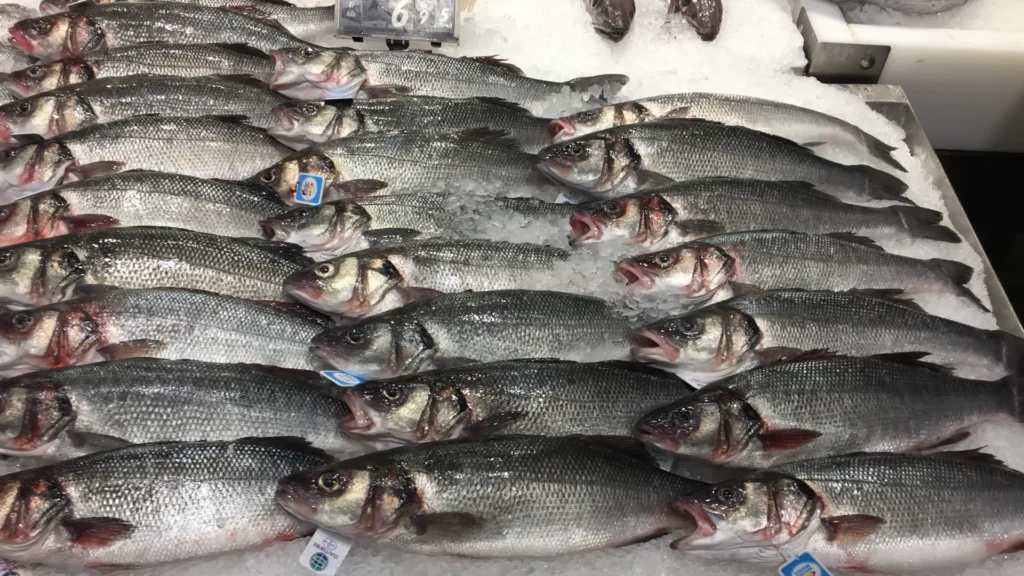When you’re aiming to snag the best deals at your local fish market, knowing when to go and what to look for makes all the difference. Arriving early not only gives you first pick of the freshest seafood but also puts you in a better position to negotiate as vendors are eager to make their first sales. You’ll need to spot the hallmarks of quality—bright eyes, shiny scales, and a clean smell are key indicators. But there’s more to mastering the fish market than timing and keen observation. What negotiation tactics should you employ, and how can seasonal trends affect your bargaining power? Let’s explore how you can become a savvier shopper and make the most out of your next visit.
Best Times to Visit Fish Markets
If you’re aiming to snag the freshest catch, visiting a fish market early in the morning is your best bet. That’s when the day’s haul comes in, so you’ll have first pick of the top-quality seafood. Fish markets typically start bustling as early as 4 AM, with activity peaking by 6 AM. This is when you’ll find local chefs elbowing through the crowd, hunting for the best ingredients for their menus.
You should also consider the days of the week. Midweek is often ideal. While weekends attract larger crowds, which can drive prices up due to higher demand, suppliers replenish their stock more frequently during the week to accommodate restaurant orders. This means that not only do you avoid the weekend hustle, but you also get a great selection.
Moreover, visiting after a holiday can be a strategic move. Markets might be quieter, and vendors could be looking to sell their remaining stock quickly, potentially at lower prices. This is a wise time to visit if you’re not only after the freshest but also the most cost-effective seafood options.
Identifying Quality Seafood
When you’re at the fish market, knowing how to spot quality seafood is crucial. First, check the fish’s eyes. They should be clear and slightly bulging. Cloudy eyes often indicate an older catch.Next, inspect the gills; they should be bright red or pink, not slimy or dull. This is a sign of freshness and proper handling.
Smell is another key indicator. Fresh fish smells like the ocean, clean and briny, not fishy or sour. If you’re looking at shellfish, ensure they’re alive before buying. For instance, clams and mussels should have their shells closed, or they should close when tapped. If they don’t, they’re not fresh.
Touch is also important. The flesh should be firm and bounce back when you press it lightly. If it leaves an indent, the fish isn’t fresh. For fillets, look for moist flesh with a shiny appearance and tight, intact skin. Any dryness or browning around the edges can indicate age or poor handling.
Mastering Negotiation Techniques
Mastering negotiation techniques can significantly enhance your ability to secure the best deals at fish markets. Firstly, it’s crucial to understand the vendor’s perspective. Most are more willing to negotiate earlier in the day when they’re looking to kickstart their sales, or just before closing when they need to clear out stock. Timing your visit can give you an edge. You’ll also benefit from showing familiarity with market prices. Do your homework; know the going rates for different types of fish and seafood. This knowledge not only empowers you to recognize a fair offer when you see one but also shows the seller that you’re informed, which can deter them from quoting inflated prices.
Always maintain a friendly demeanor. A smile and polite conversation can open doors to better prices. You’re more likely to get a favorable response when you’ve established a rapport. Furthermore, don’t be afraid to walk away if the price isn’t right. Often, vendors will call you back and offer a better deal rather than lose a sale.
Lastly, consider buying in bulk. Sellers often lower the price per unit if you’re purchasing larger quantities. This can be particularly effective if you’re shopping for a big event or stocking up your freezer.
So, to snag the best deals at your local fish market, hit the early hours to catch vendors when they’re most open to haggling. Always check for clear eyes and firm flesh to ensure you’re picking premium seafood.
Don’t forget to stay friendly and brush up on current prices to enhance your bargaining power. Buying in bulk can also lead to bigger savings. With these strategies, you’ll become a savvy shopper, making the most of your trips to the fish market.
Learn more:
Exploring Sustainable Seafood Options at Fish Markets: A Consumer’s Guide
How to Navigate the Sea of Choices at Your Neighborhood Fish Market

